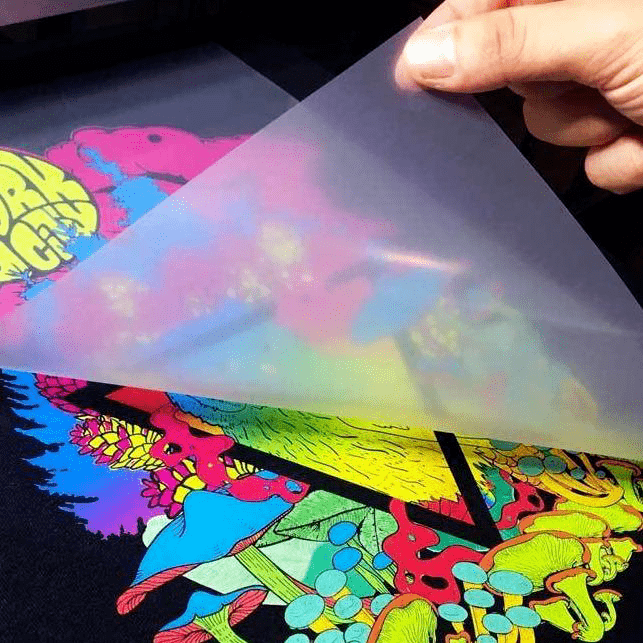Cutting-edge DTF Printing Solutions: Boost Your Clothing with Direct-to-Film Innovation
Ultimate Overview to DTF Printing Methods for Magnificent Textile Designs
Embarking on the journey of mastering DTF printing methods can open up a globe of opportunities for developing aesthetically exciting textile styles. In this overview, we will certainly check out the complex details of DTF printing, from understanding the fundamental essentials to unraveling advanced color techniques that can elevate your styles to brand-new elevations.
Recognizing DTF Printing Basics
DTF printing, a process that involves moving designs from a special movie to textiles utilizing warmth and pressure, creates the structure of textile printing methods. The first action in DTF printing includes creating or choosing a layout that will be published onto the textile.
As soon as the style is printed on the movie, it is after that meticulously put onto the fabric, guaranteeing correct positioning and positioning. The following vital action includes using heat and pressure using a heat press machine. This procedure activates the dyes or pigments on the movie, creating them to sublimate and bond with the textile fibers completely. The last result is a sensational, long-lasting textile design that is cleanable, flexible, and resistant to fading. On the whole, comprehending the fundamentals of DTF printing is essential for understanding this contemporary fabric printing strategy.
Picking the Right Textile Products
Having established the fundamental principles of DTF printing methods for textile styles, the following essential consideration exists in choosing the suitable textile products to enhance this innovative process effectively. Additionally, the stretchability of these products can fit the heat transfer process entailed in DTF printing without distorting the style. By selecting the ideal fabric materials, developers can make best use of the capacity of DTF printing to develop lasting and spectacular fabric styles.

Understanding the Printing Refine
To stand out in DTF printing methods for textile layouts, understanding the printing process is crucial for achieving high-grade and consistent results. The temperature level, stress, and duration of warmth application should be meticulously controlled to ensure appropriate attachment of the design to the textile. By developing each of these steps in the printing process, developers can continually create long lasting and sensational fabric designs with DTF printing strategies.
Enhancing Designs With Color Strategies

Furthermore, try out color gradients can bring a sense of activity and fluidity to the layout. By blending colors flawlessly, a slope effect can be accomplished, including a modern-day and dynamic touch to the textile design. In addition, utilizing shade obstructing techniques can develop strong and striking visuals by juxtaposing various strong colors in unique sections of the style.
Furthermore, including metal or neon colors can offer a distinct and eye-catching aspect to the fabric style, making it stand out and radiate a feeling of vibrancy. When strategically applied, these color techniques can raise the general aesthetic appeal of textile layouts, making them extra unforgettable and fascinating.
Troubleshooting Common DTF Printing Issues
After his comment is here checking out different color techniques to boost fabric layouts, it is necessary to resolve typical DTF printing concerns that may occur throughout the manufacturing procedure. One typical issue is poor attachment, which can result from improper healing times or temperature levels. To resolve this problem, guarantee that the curing setups are precise which the sticky utilized appropriates for the specific material being printed on. One more frequent challenge is shade disparities, where colors may appear in different ways than anticipated. This can be triggered by incorrect shade profiles or settings in the printing software. To tackle this, double-check the color settings and profiles to ensure they match the intended layout. Additionally, concerns with picture quality and sharpness can occur due to low-resolution pictures or inappropriate printing strategies. To resolve this, constantly make use of high-grade photos and change the printing settings for optimal quality. By understanding these common troubles and implementing the required troubleshooting steps, you can boost the overall high quality of your DTF printed fabric designs.
Final Thought
In conclusion, understanding DTF printing strategies is necessary for producing magnificent textile designs. With technique and focus to information, one can produce distinct and gorgeous textile layouts utilizing DTF printing methods.
)))))
DTF printing, a process that includes moving styles from a special movie to textiles utilizing heat and stress, develops the foundation of fabric printing methods.Having established the fundamental concepts of DTF printing methods for textile layouts, the following critical consideration exists in picking the appropriate textile products to complement this ingenious procedure properly. By choosing the right textile materials, developers can take full advantage of the potential of DTF printing to create spectacular and lasting textile layouts.
To succeed in DTF printing methods for fabric styles, understanding the printing process is vital for achieving high-grade and consistent outcomes. DTF Printing. By sharpening each of these steps in the printing procedure, developers can continually create website link stunning and resilient fabric layouts with DTF printing techniques